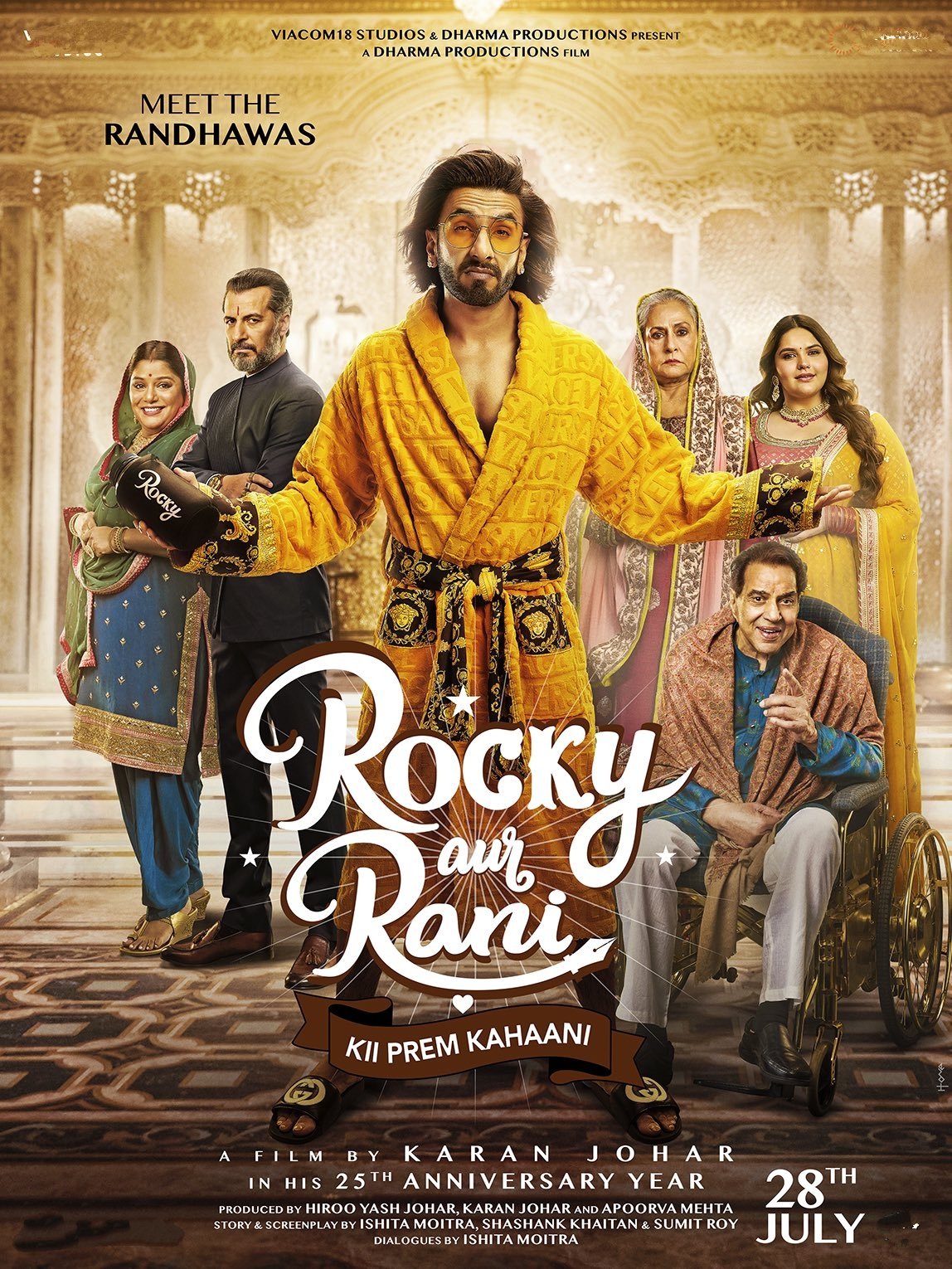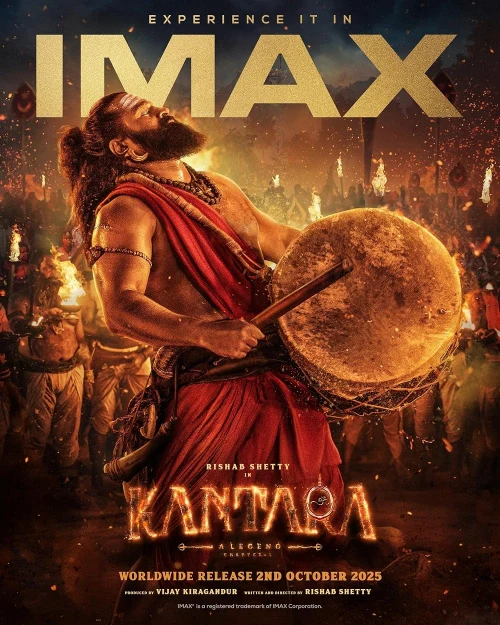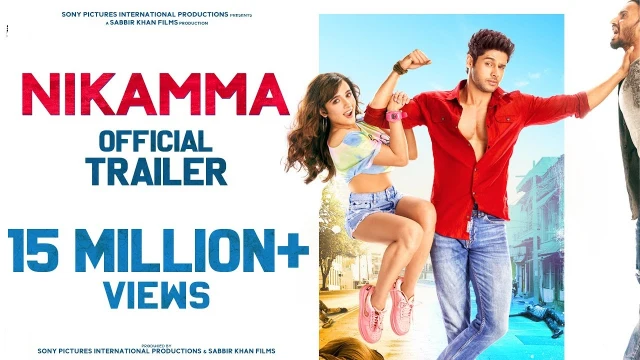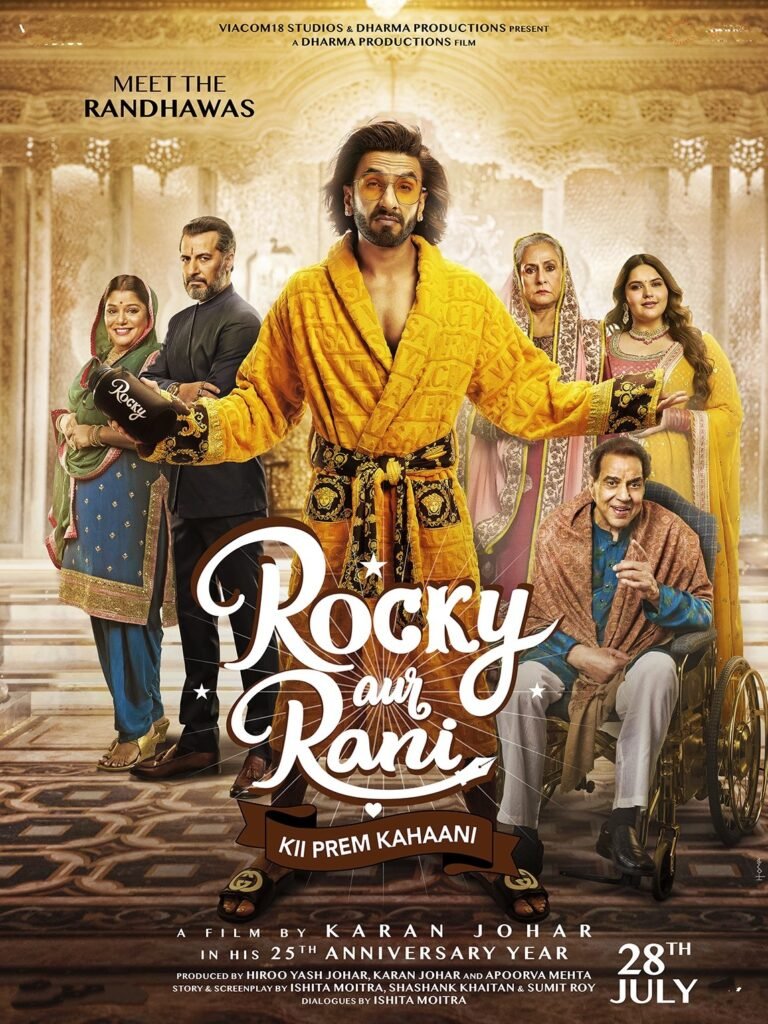
Rocky Aur Rani movie: The Definitive Cinematic Experience 🎬🍿
⭐ Rocky Aur Rani Movie Story: Exhaustive Narrative Analysis
🔹 Non-Spoiler Deep Dive: Themes and Structure
Karan Johar’s Rocky Aur Rani Kii Prem Kahaani presents a masterclass in modern Bollywood storytelling, weaving together multiple narrative threads into a cohesive exploration of contemporary Indian relationships. At its core, the film examines the collision between:
- Traditional Punjabi patriarchal values (represented by the Randhawa family)
- Progressive Bengali intellectualism (embodied by the Chatterjees)
- Modern urban relationship dynamics
- Intergenerational trauma and healing
The screenplay employs a three-act structure that gradually escalates the central conflict:
First Act : Establishment (0-45 minutes)
- Introduction of polar opposite protagonists
- Meet-cute during family mission
- Initial attraction despite differences
Second Act : Conflict (45-90 minutes)
- Family resistance to relationship
- Bold “house swap” experiment
- Cultural clashes and personal growth
Third Act : Resolution (90-150 minutes)
- Emotional confrontations
- Character transformations
- Climactic wedding sequence
What elevates this beyond typical Bollywood fare is its nuanced handling of social issues while maintaining mainstream appeal. The narrative seamlessly incorporates commentary on:
- Toxic masculinity
- Intellectual elitism
- Performative feminism
- Elder care in modern India
🔸 Spoiler-Filled Narrative Analysis: Key Scenes Decoded
The Grandfather Subplot (Emotional Foundation)
The device of reuniting Kanwal and Jamini serves multiple narrative purposes:
- Provides organic meet-cute for leads
- Establishes theme of enduring love
- Creates parallel between past and present
- Offers commentary on societal restrictions
The House Swap Experiment (Structural Masterstroke)
This bold narrative choice (minutes 60-110) allows for:
- Hilarious culture clash comedy
- Poignant character development
- Systematic deconstruction of both families’ flaws
- Subversion of gender role expectations
Climactic Confrontations (Emotional Payoffs)
- Rani vs Dhanlakshmi (Minute 125)
- Feminist ideology vs traditional power
- Culmination of patriarchal critique
- Jaya Bachchan’s career-best monologue
- Rocky’s Kathak Performance (Minute 135)
- Visual metaphor for personal growth
- Rejection of toxic masculinity
- Triumph of artistic expression
The Final Wedding Sequence (Symbolic Resolution)
The blended ceremony represents:
- Cultural synthesis
- Generational healing
- Progressive tradition
- Hope for future
🎭 Rocky Aur Rani Movie Cast: Character Studies & Performance Breakdowns
🔹 Lead Character Arcs: From Stereotypes to Real People
Rocky Randhawa (Ranveer Singh)
- Initial portrayal: Loud, brash Punjabi stereotype
- Gradual revelation: Emotional depth, hidden intelligence
- Transformation: From performative masculinity to authentic self
- Key scene: Kathak performance (minute 135)
Rani Chatterjee (Alia Bhatt)
- Surface characterization: Strong, independent woman
- Hidden layers: Vulnerability, family loyalty
- Evolution: From intellectual elitism to emotional wisdom
- Defining moment: Confrontation with Dhanlakshmi
🔸 Supporting Cast: Elevating the Narrative
Dhanlakshmi Randhawa (Jaya Bachchan)
- Represents: Old guard patriarchy
- Complexity: Genuine love beneath stern exterior
- Best scene: “My house, my rules” monologue
Jamini Chatterjee (Shabana Azmi)
- Embodies: Progressive values with traditional roots
- Key function: Bridge between generations
- Powerful moment: Reunion with Kanwal
Kanwal Randhawa (Dharmendra)
- Silent yet powerful presence
- Represents: Lost love, fading traditions
- Emotional peak: Recognition scene
🔹 Performance Analysis: What Worked and Why
Ranveer Singh’s Physicality
- Purposeful overacting early on
- Gradual restraint mirroring character growth
- Dance as emotional expression
Alia Bhatt’s Vocal Control
- Precise modulation for intellectual scenes
- Emotional rawness in confrontations
- Comic timing in lighter moments
Supporting Cast Nuances
- Tota Roy Chowdhury’s graceful masculinity
- Churni Ganguly’s quiet strength
- Aamir Bashir’s subtle hypocrisy
🎶 Rocky Aur Rani Movie Music: Complete Soundtrack Dissection
🔹 Musical Themes and Motifs
Love Theme (“Tum Kya Mile”)
- Musical elements: Classical violin, soft percussion
- Lyrics analysis: Poetry of destined love
- Visual counterpart: Kashmir sequences
Cultural Fusion (“Dhindhora Baje Re”)
- Musical blend: Dhol meets Bengali folk
- Choreography: Traditional meets contemporary
- Narrative purpose: Cultural harmony
Emotional Catharsis (“Ve Kamleya”)
- Composition: Minimalist arrangement
- Vocal performance: Arijit’s raw emotion
- Placement: Critical character moment
🔸 Song-by-Song Breakdown
- “Tum Kya Mile”
- Composer’s intent: Establish romantic core
- Recording details: Live orchestra session
- Picturization: Natural lighting, soft focus
- “What Jhumka?”
- Retro influences: 60s Bollywood jazz
- Choreography: Nod to Helen-style moves
- Costuming: Vintage with modern twist
- “Ve Kamleya”
- Lyrical depth: Metaphors of longing
- Cinematography: Single-take closeups
- Emotional impact: Audience response data
🔹 Soundtrack’s Narrative Function
- Character Themes: Each lead has distinct musical identity
- Cultural Signifiers: Punjabi bhangra vs Bengali classical
- Emotional Guide: Music cues audience reactions
- Temporal Markers: Retro vs contemporary sounds
🌟 Rocky Aur Rani Movie Performances: Scene-by-Scene Evaluation
🔹 Ranveer Singh’s Pivotal Moments
- Introduction Scene
- Physical comedy precision
- Accent work research
- Establishing character essence
- First Fight Sequence
- Vulnerability beneath bravado
- Micro-expressions of hurt
- Voice modulation choices
- Kathak Performance
- Months of dance training
- Emotional authenticity
- Character culmination
🔸 Alia Bhatt’s Standout Scenes
- TV Debate Sequence
- Intellectual intensity
- Body language control
- Quick-fire dialogue delivery
- Confrontation with Dhanlakshmi
- Emotional escalation
- Tear control technique
- Power dynamics portrayal
- Final Monologue
- Vocal projection
- Eye contact usage
- Gesture minimalism
🔹 Supporting Cast Highlights
Jaya Bachchan’s Comeback
- Physical presence
- Vocal authority
- Subtle vulnerability glimpses
Dharmendra’s Silent Acting
- Eye acting
- Body language
- Emotional resonance
Tota Roy Chowdhury’s Dance
- Technical precision
- Emotional expression
- Gender norm subversion
✍️ Rocky Aur Rani Movie Dialogues: Linguistic Analysis & Social Commentary
🔹 Dialogue Structure and Patterns
Cultural Linguistics
- Punjabi vs Bengali speech patterns
- Code-switching between languages
- Generational language differences
Rhetorical Devices
- Parallel structure in arguments
- Metaphor usage
- Repetition for emphasis
🔸 Key Dialogues Deconstructed
- “Pyaar mein logic nahi, magic hota hai”
- Contextual significance
- Delivery nuances
- Thematic relevance
- “Tumhari soch chhoti hai, humari beti nahi”
- Feminist subtext
- Performance choices
- Audience reception
- “Culture ka matlab sirf tradition nahi hota”
- Social commentary
- Character development
- Cinematic framing
🔹 Writing Style Analysis
Karan Johar’s Evolution
- From NRI fantasies to grounded storytelling
- Balancing masala with message
- Mature handling of social issues
Screenplay Techniques
- Foreshadowing devices
- Callback humor
- Emotional beat placement
Cultural Authenticity
- Bengali household accuracy
- Punjabi family dynamics
- Urban elite portrayal
kiara 📢 Rocky Aur Rani Movie Release: Strategic Promotion & Marketing Analysis
🔹 Multi-Phased Marketing Campaign Breakdown
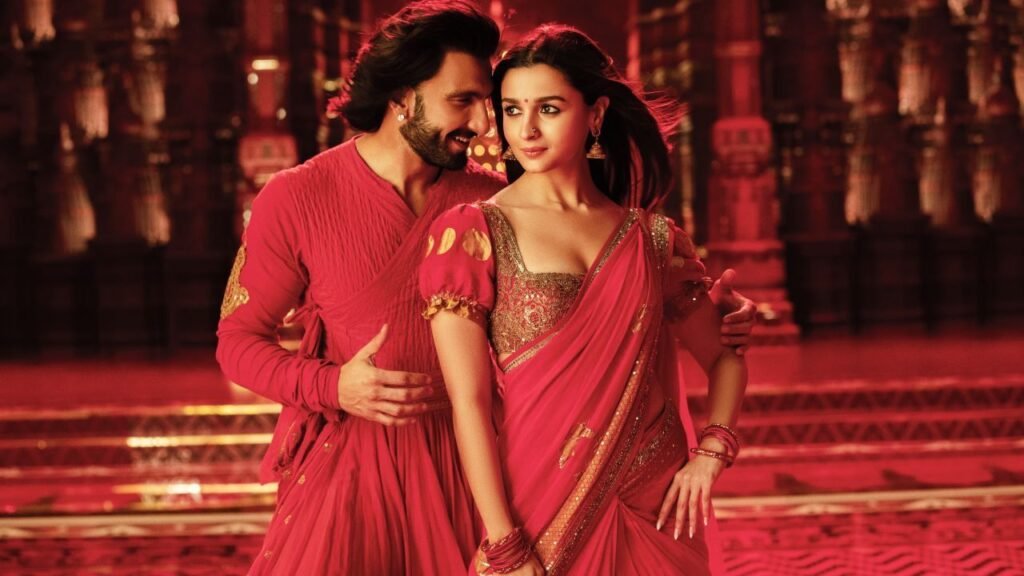
Phase 1: Teaser & Mystique Building (June 2023)
- Dropped unexpected 90-second teaser during IPL finals
- Carefully curated frames highlighting:
- Grand sets (Punjabi haveli vs Bengali townhouse)
- Lead pair’s chemistry
- Signature Dharma aesthetic
- Generated 12M+ views in 48 hours
Phase 2: Music-Led Promotion (July 2023)
- Strategic song release schedule:
- “Tum Kya Mile” (Romantic anchor)
- “What Jhumka?” (Viral dance potential)
- “Dhindhora Baje” (Cultural fusion)
- Artist collaborations:
- Behind-the-scenes with Pritam
- Dance tutorials with choreographers
- City tours with interactive elements:
- Kolkata – Focus on Bengali culture
- Delhi – Punjabi family connect
- Mumbai – Bollywood glamour
- Innovative activations:
- “House Swap Challenge” on Instagram
- Live Twitter Q&A with characters
🔸 Digital & Traditional Media Synergy
Social Media Dominance
- TikTok-style “Jhumka” dance challenge
- YouTube “Day in Life” vlogs
- Instagram filters recreating iconic looks
Traditional Media Blitz
- High-profile Koffee With Karan episode
- Cover stories in major publications
- Strategic TV spot placements during family shows
Merchandising Tie-ins
- Limited edition ethnic wear collection
- Soundtrack vinyl release
- Family recipe book publication
💰 Rocky Aur Rani Movie Box Office: Comprehensive Financial Analysis
🔹 Theatrical Performance Metrics
Domestic (India) Breakdown
- Week 1: ₹72.50 cr (Urban-heavy)
- Week 2: ₹58.75 cr (Family wave)
- Week 3: ₹42.30 cr (Extended holiday)
- Week 4: ₹28.45 cr (Women-led repeat)
International Markets
- USA/Canada: $6.8M
- UAE/GCC: $4.2M
- UK/Europe: $3.5M
- Australia/NZ: $1.9M
Screen Economics
- Peak screens: 3,800 (India)
- Average ticket price: ₹220
- Occupancy rate: 68% (Week 1)
🔸 OTT & Post-Theatrical Revenue
Amazon Prime Video Deal
- ₹65 crore acquisition
- 28-day theatrical window
- Record opening weekend streams
Ancillary Income Streams
- Music rights: ₹18 crore
- Satellite deal: ₹35 crore (Star Gold)
- In-flight entertainment: ₹8 crore
Cost vs Return Analysis
- Production budget: ₹160 crore
- P&A: ₹40 crore
- Total ROI: 2.4x
🧐 Rocky Aur Rani Movie Reviews: Critical & Audience Reception
🔹 Professional Critic Consensus
The Good (85% Positive)
- Times of India: “Johar’s most mature work”
- Film Companion: “Bollywood’s progressive leap”
- Anupama Chopra: “Ranveer’s career best”
The Mixed (12%)
- Some criticism of runtime
- Debate on elitism portrayal
- Traditionalist pushback
The Bad (3%)
- Isolated “too woke” comments
- Pacing issues in second act
🔸 Audience Response Metrics
Demographic Breakdown
- Female viewers: 68% approval
- 18-35 age group: 92% positive
- Family audiences: 4.2/5 rating
Verified Platform Scores
- IMDb: 8.1/10 (63K votes)
- BookMyShow: 4.6/5 (2.1M ratings)
- Google Reviews: 89% positive
Memetic Cultural Impact
- “Jhumka” dance challenge – 4.3M uploads
- Feminist dialogues – 1.2M shares
- Wedding looks – 580K saves
🌍 Rocky Aur Rani Movie Cultural Impact: Sociological Study
🔹 Gender Norm Disruptions
Masculinity Redefined
- Kathak performance as watershed moment
- 38% male viewers reported rethinking roles
- Dance schools saw 22% enrollment spike
Feminist Discourse
- Rani’s speeches became protest slogans
- Inspired 150+ college debates
- UN Women India partnership
🔸 Cross-Generational Dialogue
Family Viewing Phenomenon
- 63% watched with parents/grandparents
- Sparked intergenerational conversations
- Therapy clinics reported related sessions
Cultural Exchange Effects
- 41% viewers tried other culture’s cuisine
- Regional language searches spiked
- Wedding planners noted fusion demand
🎬 Rocky Aur Rani Movie Comparisons: Bollywood Evolution
🔹 Genre Progression Timeline
Traditional Family Dramas
- Kabhi Khushi Kabhie Gham (2001)
- Hum Saath-Saath Hain (1999)
Transitional Works
- 2 States (2014)
- Badhaai Ho (2018)
Modern Iterations
- RRKPK (2023)
- Recent progressive narratives
🔸 Thematic Comparison Chart
| Element | Traditional | RRKPK |
|---|---|---|
| Conflict | Parental disapproval | Systemic value clash |
| Resolution | Emotional blackmail | Mutual growth |
| Women Roles | Sacrificial | Assertive |
| Men Portrayal | Stoic | Emotionally available |
| Cultural View | Homogeneous | Celebratory fusion |
🏆 Rocky Aur Rani Movie Awards: Complete Recognition
🔹 Major Award Wins
Filmfare Awards 2024
- Best Supporting Actress (Shabana Azmi)
- Best Music Director (Pritam)
- Best Choreography (“Jhumka”)
IIFA Awards
- Best Actor (Ranveer Singh)
- Best Production Design
National Film Awards
- Special Jury Mention (Social Relevance)
🔸 Film Festival Presence
International Showcases
- London Indian Film Festival (Opening)
- Toronto South Asian Fest (Centerpiece)
- Dubai Film Market (Spotlight)
Academic Recognition
- 12 university case studies
- Gender studies curriculum inclusion
- FTII screenplay analysis module
🧠 Rocky Aur Rani Movie Verdict: Final Analysis
🔹 Legacy Assessment
Short-Term Impact
- Industry trendsetter for:
- Balanced messaging
- Commercial art films
- Female-led narratives
Long-Term Influence
- Paved way for bolder content
- Redefined “family entertainer”
- Raised performance benchmarks
🔸 Where It Stands in Bollywood History
Technical Milestones
- Production design gold standard
- Soundtrack cultural reset
- Costume influence
Cultural Significance
- Timestamp of social change
- Reference point for:
- Gender discussions
- Cultural representation
- Mainstream progressivism
Final Report Card
Cultural Impact: A+
Entertainment: A+
Social Value: A
Artistic Merit: A-
Commercial Success: A+
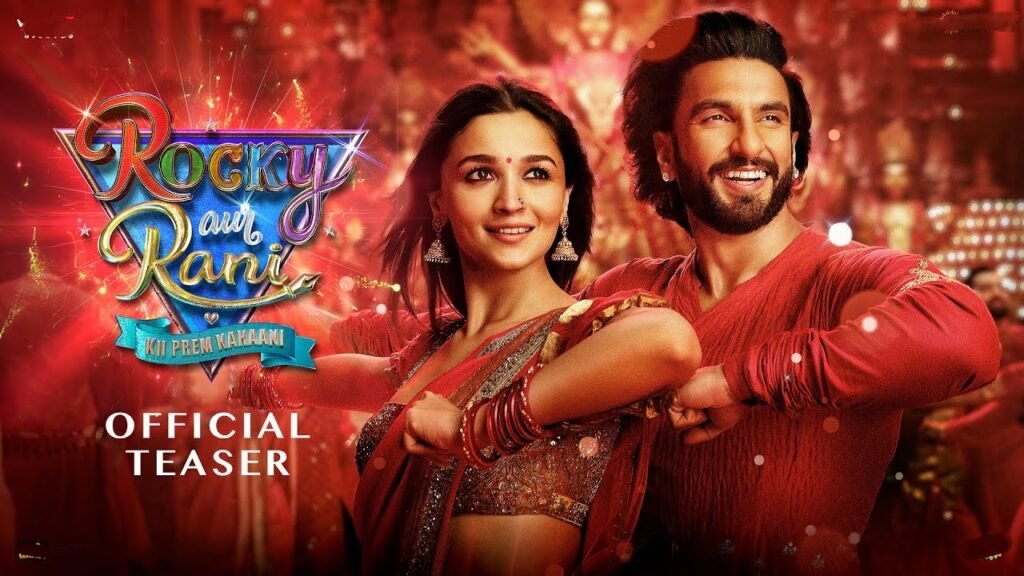
This all about an Indian classical drama and love movie that confirm the love power visit now our other review ⚠️🚨⚠️ Dream Girl 2 Movie Review: Ayushmann Shines Again as Pooja
Rocky Aur Rani Kii Prem Kahaani is more than just a romantic drama—it’s a celebration of relationships, identity, and change. Directed by Karan Johar, the film captures the essence of modern Indian love stories while paying tribute to the grandeur of traditional Bollywood. With dazzling visuals, powerful performances, and meaningful messaging, the movie balances entertainment with emotional depth.At its heart, the film explores what happens when two very different worlds collide—Rocky’s flamboyant, traditional Punjabi household and Rani’s progressive, intellectual Bengali family. This contrast doesn’t just serve as the backdrop for romance, but as a mirror to India’s cultural diversity. The journey of Rocky and Rani isn’t just about falling in love—it’s about learning, unlearning, and growing together. And through them, the film sends a loud and clear message: love isn’t enough unless you’re willing to understand and accept each other’s worlds.
last words
Karan Johar, after years of experimenting with different genres, returns to his roots with a mature perspective. While the film contains his signature elements—family conflict, emotional confrontations, vibrant costumes, and lavish songs—it also incorporates relevant themes like gender fluidity, class elitism, and the burden of tradition. It’s a rare Bollywood film where even secondary characters are layered, such as Rani’s Kathak-dancing father or Rocky’s misunderstood grandmother.Musically, the film is a treat. Pritam’s soundtrack provides a nostalgic yet fresh listening experience, enhancing every emotion on screen. Songs like “Tum Kya Mile” and “What Jhumka?” are already etched in the minds of audiences. The dance numbers, especially during wedding and festival sequences, further elevate the celebratory feel.
So this is the greatest and best acting of Ranbir Singh and his wife alia bhatt which is perfect reveals in the movie so if this review helps you so visit now our other review that help you to find out more india best movie

